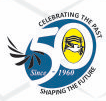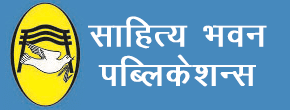गृह विज्ञान का ज्ञान प्रत्येक व्यक्ति विशेषकर छात्राओं के लिए अत्यंत आवश्यक है क्यूंकि यह एक ऐसा विषय है जिसकी आवश्यकता रोजमर्रा के सभी कार्यों में सभी को महसूस होती है | गृह विज्ञान पांच प्रमुख भागों आहार एवं पोषण विज्ञान, वस्त्र एवं परिधान विज्ञान, प्रसार शिक्षा, बाल विकास एवं गृह सज्जा एवं पारिवारिक संसाधनों का प्रबंधन से मिलकर बना है जो इस विषय को सभी के जीवन के लिए उपयोगी बनाते है | गृह विज्ञान का ज्ञान पाकर गृहिणियां अपने परिवार एवं अपने समाज का जीवन स्तर ऊचा उठा सकती है तथा अपनी कार्यकुशलता में वृद्धि कर स्वयं की अभिव्यक्ति भी कर सकती है | यदि किसी व्यक्ति को गृह-विज्ञान का ज्ञान है तो वह निश्चित ही सफल नागरिक बनने में सक्षम है |
प्रस्तुत पुस्तक में बी. ए. गृह विज्ञान, द्वितीय सेमेस्टर का गृह-विज्ञान विषय का पूरा पाठ्यक्रम प्रस्तुत किया गया है |
यह पुस्तक उत्तर प्रदेश, उच्च शिक्षा विभाग निर्धारित नई शिक्षा निति 2020 के कॉमन पाठ्यक्रम के अनुसार बनाई गई है, जो उत्तर प्रदेश के समस्त विश्वविद्यालयों एवं उनसे संबद्ध महाविद्यालयों में लागु होगा |
इस पुस्तक में सम्पूर्ण पाठ्यक्रम को अत्यंत ही सरल, रोचक एवं प्रभावकारी क्रम से व्यवस्थित किया गया है | पाठ्यक्रम को और अधिक सहज बनाने के लिए आकर्षक चित्रों के माध्यम से समझाया गया है | साथ ही प्रत्येक अध्याय के अंत में अभ्यास हेतु दीर्घ उत्तरीय, लघु उत्तरीय एवं बहुविकल्पीय प्रश्नो (उत्तर सहित) को दिया गया है | प्रस्तुत पुस्तक में वस्त्र एवं परिधान विज्ञान का परिचय एवं पारिवारिक संस्धानों का प्रबंधन; दोनों ही भागो से संबंधित विषयवस्तु को पाठकों के लिए ज्ञानवर्धन एवं क्रमबद्ध रूप में संजोया गया है एवं प्रयोगात्मक पाठ्यक्रम को चित्रों के माध्यम से अत्यंत सरल भाषा में सम्मिलित किया गया है |
गृह विज्ञान (Home Science) Syllabus For B.A. IInd Semester of Various Universities of Uttar Pradesh
Paper 1 : Introduction To Clothing And Textiles And Family Resource Management (Theory)
Unit – I : Introduction : (a) Introduction to Clothing and Textile (b) Its importance in day-to-day life (c) Scope (d) Classification of textile fiber on the basis of their source (e) General properties of fibers—primary and secondary.
Unit – II : Knowing Fibers : Manufacture, processing, properties and uses of (a) Cellulosic Fibers—cotton, Linen, (b) Protein Fibers—Wool, Silk, (c) Synthetic/Manmade fibers—Nylon, Polyester, Acrylic, Rayon.
Unit – III : Yarn to Fabrics : (a) Definition of Yarn, Manufacture of Yarn and Yarn Properties, (b) Different fabric construction techniques (Weaving, Knitting, Felting, Braiding, Non-woven), (c) Weaving of Cloth—Terminologies and Steps in Weaving, (d) Types of weaves—Basic and Decorative.
Unit – IV : Clothing Construction : (a)Tools for Clothing construction (b) Introduction to sewing machines, its parts and maintenance, (c) Importance of Drafting, Draping, Flat pattern techniques—advantages and disadvantages (d) fabric preparatory steps for stitching a garment—preshrinking, straightening, layout, pinning, marking and cutting.
PART-B
Unit – V : Introduction to Home Management : Basic Concepts, Purpose and Obstacles of Management. Process of Management – Planning, Organizing, Controlling and Evaluation. Motivating Factors in Management – Values, Goals and Standards – Definition and Classification.
Unit – VI : Resources, Decision making and Family life cycle : Meaning, Characteristics, Types and Factors affecting the use of Resources. Steps and Role of Decision Making in Management. Stages of Family Life Cycle.
Unit – VII : Time, Energy and Money Management : Time as a Resource, Steps in making Time Plan, Tools and Aids in Time Management. Energy as a Resource, Work Curve, Fatigue- Types, Causative Factors and Alleviating Techniques. Family income as a Resource, Sources of Income and Expenditure and Saving. Preparation of Family budget in view of family income.
Unit – VIII : Work Simplification and Household Equipments : Meaning and Techniques of Work Simplification, Mundell’s Classes of Change. Principle, Use and Care of Household Equipments such as Pressure Cooker, Mixer and Grinder, Refrigerator, Washing Machine, Vacuum Cleaner and Solar Cooker.
PAPER 2 : CLOTHING AND TEXTILES (PRACTICAL)
Unit – I : Identify fibers and fabrics : (a) Fibre identification tests—Visual, burning and microscopic—natural and synthetic, pure and blended fibres. (b) Weaves identification and understanding their usage.
Unit – II : Learning to stitch : (a) Knowing how to stitch-an idea of straight-line stitching, stitching on curves and at corners (b) Basic Stitching-Temporary Stitching, Permanent and decorative stitching.
Unit – III : Basic sewing : (a) Seams-Plain seams and its finishing, run and fell seam, French seam, (b) Attaching different Fasteners, (c) Disposal of fullness—darts, gathers, tucks and pleats, (d) Neckline Finishing—Facing and Binding.
Unit – IV : Preparing Frock : (a) Drafting, cutting and stitching of Childs’ basic block and sleeve block, (b) adaptation to “Gathered frock” with Peter Pan collar and puff sleeves.






















Reviews
There are no reviews yet.